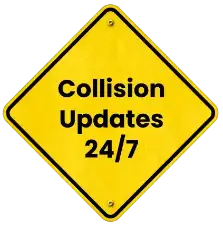
Hit‑and‑Run Accidents on I‑95


I-95 is one of the busiest highways in the United States, stretching from Maine to Florida. It’s a key route for commuters, travelers, and freight trucks. However, due to its high traffic volume, hit-and-run accidents are unfortunately common.
If you’re a victim of a hit-and-run on I-95, it can be a stressful and confusing experience. Knowing what to do next is crucial. This guide will walk you through the steps to take immediately after a hit-and-run accident and how to protect yourself legally and financially.
What is a Hit-and-Run?
A hit-and-run occurs when a driver causes an accident and then leaves the scene without providing contact information or helping the victim. It’s a serious crime with significant legal consequences. In many cases, drivers flee due to fear of being held responsible, the possibility of being intoxicated, or driving without a valid license. Regardless of the reason, hit-and-run accidents can be traumatic for the victims, leaving them uncertain about their next steps.
Immediate Actions to Take After a Hit-and-Run
The priority after a hit-and-run is your safety. If you’re able, move your vehicle to a safe location, such as the shoulder of the road. Turn on your hazard lights to warn other drivers. If the collision has caused significant damage or injury, stay inside your vehicle until help arrives. If you can safely exit the car, do so cautiously and try to avoid standing in traffic.
Immediately dial 911 to report the accident. Provide details about your location, the time of the crash, and any injuries you’ve sustained. Inform the dispatcher that you were involved in a hit-and-run accident, which helps the officers respond more effectively. If there are any visible injuries, request medical assistance right away. Emergency responders will arrive to assess the situation and start an investigation.
As soon as it is safe to do so, take photographs of your vehicle’s damage and the surrounding area. If possible, document any visible injuries, even if they seem minor. This evidence will be useful for both law enforcement and your insurance company.
If you can, record the date, time, and weather conditions. Also, write down any details about the crash, including the location and any factors that may have contributed to the accident, such as road conditions.
Try to remember as many details about the vehicle that hit you as possible. Look for any identifying features, such as the color, make, model, and any noticeable damage. The license plate number is the most crucial piece of information, but even partial numbers or letters can help investigators. If you can’t remember all the details, jot down anything you do recall to give the authorities the best chance of identifying the driver.
Reporting the Incident
Filing a police report is essential in a hit-and-run case. When officers arrive, provide them with all the details you’ve gathered, including the description of the other vehicle and its direction of travel. Be honest and thorough when reporting the incident. Law enforcement will investigate the scene and search for evidence, such as security footage or witnesses, that could help track down the driver responsible. Your report will also be critical for your insurance claim.
After reporting the incident to the police, contact your insurance provider immediately. Most insurance policies require you to report an accident as soon as possible. Inform your insurer that you were involved in a hit-and-run, as this is different from a standard accident.
They will guide you on how to file a claim and what documentation they need to process it. Your insurance company will typically assist in covering medical costs and property damage if the hit-and-run driver is not identified.
Steps to Take if You Can’t Identify the Offender
If the driver who hit you is not found, you may be able to file a claim under your own uninsured motorist (UM) coverage. UM coverage helps pay for medical expenses, vehicle damage, and other costs if the at-fault driver doesn’t have insurance or flees the scene. Check with your insurance company to see if your policy includes UM coverage. If not, you may need to rely on your health insurance to cover medical bills or pursue other options.
When dealing with a hit-and-run, having a lawyer by your side can make a big difference. A personal injury attorney can help you navigate the legal process, investigate the accident, and identify possible avenues for compensation. They can also help you pursue a claim against your insurance company if necessary. If the driver is found, they can assist with filing a lawsuit and negotiating a fair settlement.
How to Protect Yourself and Prevent Future Hit-and-Run Accidents
While you can’t always prevent a hit-and-run, being a cautious driver can reduce the risk. Always drive defensively, keep your distance from aggressive drivers, and avoid distractions while driving. If you’re involved in a minor accident, never leave the scene. Remain calm, check for injuries, and exchange information with the other driver.
If you’re a witness to a hit-and-run, your testimony could be critical in identifying the responsible driver. If you see the accident occur, try to note the vehicle’s make, model, and license plate number. Share any information you have with the authorities to help bring justice to the victim.
Common Injuries in Hit-and-Run Accidents and Legal Options
Hit-and-run accidents often result in serious injuries due to the sudden nature of the crash. Common injuries include whiplash, concussions, broken bones, internal injuries, and spinal cord damage. Even if you don’t feel injured immediately, it’s essential to seek medical attention. Some injuries, like internal bleeding or brain trauma, may not show symptoms right away.
If the driver who caused your accident is identified, you have the legal right to pursue compensation. This can cover medical expenses, lost wages, pain and suffering, and property damage. An I-95 personal injury lawyer can help you build a case and hold the responsible party accountable. If the driver is never located, your insurance company or UM coverage can still help with your claim.
